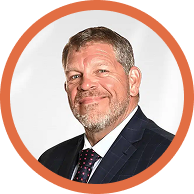By: Andrew Thrasher, CMT

I have the great honor to serve as a Portfolio Manager for an RIA, the Financial Enhancement Group, in central Indiana. We serve families across the state as well as the country, helping them plan for and invest for the retirement and future financial goals. In this role, it is my responsibility to work with our firm’s CIO, Adam Harter, CFA in managing and trading the investment models used for client assets. While our primary focus is on long-term investing as many of our clients have 10+ year time horizons for their investments, we do not ignore the short-term implications of the market and have specific model portfolios we use to navigate these investment waters. With the historic sell-off that’s taken hold of international financial markets, I thought it may be helpful to share how a professional Portfolio Manager approaches this type of volatility within their process. My role can be broadly classified into three groups: research, communication, and trading.
Research and Analysis: I spend a very large chunk of my time watching the markets, not on a tick-by-tick basis but going through primarily daily and weekly charts of both individual stocks, indices, and various other types of data and indicators I have at my disposal. During ‘normal’ market trends I typically do my charting in the morning and then again at home after the market’s closed. During periods of chaotic price action, I shift my analysis to be entirely outside of market hours.
When the market is open is when I go through outside research our firm subscribes to or the list of curated writers and bloggers I follow. By using this time to see what others I highly respect are saying I can better grasp serval viewpoints of the market and potentially uncover something I may have missed in my own research. One (maybe) unique practice I have with this regard is I don’t read everyone and everything. I don’t click every link or peruse every ‘hot take’ on the market. By sticking to my crafted list of trusted writers I build a history with them. I see how their analysis and thought process changes with the market. I have a different expectation from a writer whose an economist than another whose watching option flows or intermarket relationships. I stay in constant contact with Adam as we share things we are both seeing in our research and reading as his viewpoint is more fundamentally-focused and mine being on the technicals of the market we are able to tackle the market from multiple angles.
By shifting my analysis to when the market is closed there’s less of an emotional response to what’s taking place intraday and allowing it to infect my process. I review everything either before we open and/or after the close and create my game plan for the next day during those times – no “on the field” play calling so to speak. During this time, I craft the stocks, whether they are current investments or on our watch list, that I want to closely monitor the next day with specific levels in mind and not every day is one that requires an action to be taken, thankfully most don’t! This preparation is not abnormal from my regular process but it’s critically important during times of heightened volatility.
During market hours if I see something that catches my eye then I make note of it and reference back to it after the close. Again, this prevents tick-by-tick emotion caused by 1,000+ point swings to take control.
Communication: Communicating with the families we take care of is critically important. While I personally do not meet with very many clients (allowing my focus to be on asset management), our firm’s advisors are all-hands-on-deck during market environments like this. They are proactively making calls to clients they know are more prone to worry over short-term volatility, prefer to be contacted when markets have an unexpected move, or those that may be newer and less familiar with our process during market downturns. Our CIO, Adam, and I meet weekly with the advisors and associate advisors to update them on changes we’ve been making to the portfolios as well as what we believe is important news stories and developments in the market. We also provide possible answers to questions they may get about what’s taking place so they can be better prepared to address client’s concerns. I also meet one-on-one with many of our team to answer their personal questions and help them better understand the market dynamics at play.
Trading: Because we manage money for over 1,000 families, trading is a big piece of my role. Whether that’s freeing up cash for a requested distribution or RMD, putting new accounts into our models or making buy and sell changes within our investment portfolios. Thanks to our excellent technology partners like Orion and our primary custodian, TD Ameritrade, trading has become extremely efficient. In ‘normal’ markets, we can process trades through standard rebalancing – selling what’s grown too large, etc. During volatile periods in the market we begin to take a more surgical approach, especially in non-qualified (tax sensitive) accounts. I work with our CIO in crafting a plan for what we want to focus on for potential sell candidates for cash distributions, at times it may be fixed income holdings due to their rise in price, causing it to be a larger weighting in the investment account than we would desire, and other times it’s a stock or ETF we no longer hold in favor.
While this is a small glimpse into a day of a Portfolio Manager for an RIA, I hope it may help provide a look at the changes I make and what I focus on when markets get crazy. The main priority is emotion management in order to properly attempt to navigate the ship through rough waters.
Disclaimer: Do not construe anything written in this post or this blog in its entirety as a recommendation, research, or an offer to buy or sell any securities. Everything in this post is meant for educational and entertainment purposes only. I or my affiliates may hold positions in securities mentioned in the blog. Please see my Disclosure page for full disclaimer. Connect with Andrew on Google+, Twitter, and StockTwits.





